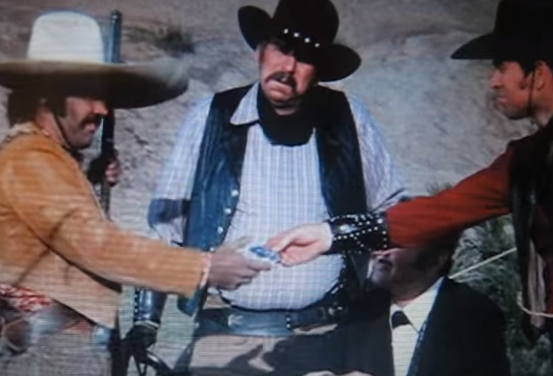Jason R. Baron of Drinker Biddle & Reath LLP: eDiscovery Trends

This is the third of the 2016 LegalTech New York (LTNY) Thought Leader Interview series. eDiscovery Daily interviewed several thought leaders at LTNY this year to get their observations regarding trends at the show and generally within the eDiscovery industry. Unlike previous years, some of the questions posed to each thought leader were tailored to their position in the industry, so we have dispensed with the standard questions we normally ask all thought leaders.
Today’s thought leader is Jason R. Baron. An internationally recognized speaker and author on the preservation of electronic documents, Jason is a member of Drinker Biddle’s Information Governance and eDiscovery practice and also a member of the leadership team for the Information Governance Initiative. Jason previously served as Director of Litigation for the U.S. National Archives and Records Administration (NARA) and as trial lawyer and senior counsel at the Department of Justice. He was a founding co-coordinator of the National Institute of Standards and Technology TREC Legal Track, a multi-year international information retrieval project devoted to evaluating search issues in a legal context. He also founded the international DESI (Discovery of Electronically Stored Information) workshop series, bringing together lawyers and academics to discuss cutting-edge issues in eDiscovery.
What are your general observations about LTNY this year and how it fits into emerging trends?
It’s clear to me that there has been a maturing of the market for the kind of analytics software that some of us have been evangelizing about in the eDiscovery space for some time. This year, it was noticeable that there weren’t 27 sessions devoted to technology assisted review in e-discovery cases! However, in place of that narrower focus, there were any number of sessions on analytics and applying analytics to a broader segment of the legal space, which I applaud.
Also, I think there was an acknowledgement that, from the perspective of Information Governance, there is an analytics play to be had. With bigger and bigger data sets, companies need to face the fact that both employees and customers generate huge amounts of data and they need to make sure that they understand and have visibility into that data. So, the tools that evolved for purposes of eDiscovery are perfectly suitable – with tweaks – to cover a variety of legal purposes, and we’re seeing that play out at LegalTech.
At LTNY, you were one of the panelists on the Thursday keynote addressing issues such as private servers, bring-your-own-device (BYOD) and other organization challenges for managing data by individual employees. What do organizations, such as government entities and corporations, need to do manage personal data more effectively?
Well, I’m glad you asked me that. The session that I had the privilege of speaking on (with Judge Scheindlin and Edward McMahon as fellow panelists and Professor Dan Capra moderating) was all about what I call “shadow IT,” which is a phenomenon that is closely related to but distinct from BYOD. In the past decade or so, we all have been empowered to simply go to the Internet to use whatever variety of cool apps that are out there, like Google Docs and Dropbox, to facilitate communications and doing work and “parking” documents. We go out and communicate routinely on Gmail and other forms of commercial services. All of these activities, to the extent that they involve communications that relate to business or the work of governments, are what I consider to be “shadow IT” in nature because they are not controlled by a traditional IT department in a corporation or agency.
So, maybe a decade ago, if there was a Rule 34 request, you were pretty much assured that all of the relevant material could be gathered by a state-of-the-art IT custodian performing a collection effort against individual accounts on an official system. That’s no longer absolutely the case. Today, you need to ask follow-up questions as to where individuals are parking their documents and where are they communicating outside the “official” channel for doing so.
In government, there are very well known, long standing rules for what constitutes a Federal record, including email. There is an expectation on the part of the public – and there should be an expectation on the part of government officials — that Freedom of Information Act (FOIA) requests for records created about government business will be made available. (Indeed, at least some of those records will be preserved as permanent records in the National Archives of the United States.) So, it is incumbent to make sure that one follows the rules — and the rules for government are different than what they are for the private sector. A clear statute in place since 2014 says that anytime that you’re communicating about government business on a private commercial network, you need to either “cc” or forward that message within twenty days to an official record keeping system. This isn’t the place to get into what regulations were prior to 2014 and how that plays out in terms of the political realm, but our panel did cover the general topic of the responsibility of the officials to make sure that their communications about government business are, in fact, captured in an official system somewhere.
Also, for some time, I have been a very big advocate of email archiving and capture technologies generally, so that we don’t lose history and don’t lose a broad swath of government records that are otherwise not going to be captured if you simply leave it to individuals themselves to take steps to preserve.
The problem of shadow IT is one that is equally of concern in the private sector because high level corporate officials sometimes, in various verticals, are governed by strict email archiving requirements (e.g.,SEC and FINRA rules). So senior people need to also be aware that, if they’re communicating about cover topics outside of the usual channels, they need to take additional steps to make sure that those are properly archived.
These issues are only emerging now and it’s probably only going to get “worse”! In my view, the issues are going to be more complex in the future with more apps, more platforms, more devices and more opportunities for “end runs” around the traditional IT department.
In the case Nuvasive v. Madsen Medical, the Court recently vacated an adverse inference instruction sanction previously applied against the plaintiff because of the amendment to Rule 37(e). Do you see that as a trend for other cases and do you expect that other parties that have been sanctioned will file motions to have their sanctions re-considered?
There are some subtle provisions as to when courts will or will not apply the new rules to existing cases. But, beyond that, I have been watching with great interest the number of decisions that have been handed down that are applying the new provisions of Rule 37, and doing so in a way that suggests that courts will continue to be quite active in monitoring what is happening in discovery — imposing severe sanctions where appropriate and, when there isn’t the requisite level of intent, applying some sort of curative measures otherwise. So, I think there may have been a greater level of judicial activity than was anticipated in the immediate period since December 1 when the rules changed. It seems clear to most observers in the space that we’re going to have dozens and dozens of decisions in 2016 that apply the new rules, and we will get to see the patterns emerging pretty quickly.
What are you working on that you’d like our readers to know about?
I think the exciting work of the Information Governance Initiative (IGI) continues to push smart conversations in the space about how corporations can get a handle on their data. We had a very successful IGI summit, known as the Chief Information Governance Officers (CIGO) summit, in Chicago last year. We’re going to have the second CIGO summit in May of this year again in Chicago and we’re looking forward to that. We also have any number of activities that we’re planning to do in terms of retreats, dinners and boot camps, etc. I think IG is still an emerging discipline that should be of great interest to many corporate actors who don’t have a good handle on their existing workflows, policies and programs about data – whether it’s data breach or data reduction or data archiving or data analytics. I feel very privileged to be part of a group of individuals at the IGI that are really doing some serious thinking about these types of topics.
I must say I was surprised by Monica Bay at LegalTech, who pulled me in at the last moment to be a judge at the second “Shark Tank” session held there — where I felt a little like being on “America’s Got Talent” as one of three judges in the room looking at the individual entrepreneurs who were giving presentations. But, as the session progressed (and as recorded by David Horrigan, who was tweeting the session in live stream fashion) it seemed very clear to me that maybe it’s time for me to retire! I say so because of the profusion of disruptive technologies in the space, whether it has to do with smart contracts or dialing up lawyers over the web, it all heavily suggests that all of our current business models are going to be disrupted in due course and maybe very soon! There are simply a lot of exciting technologies in the space for which the CodeX people are fostering a platform. In the end I confess to being quite happy that Monica pulled me in, and I would urge your readership to pay attention to what CodeX is doing. I believe there is a conference coming up (CodeX FutureLaw 2016) on May 20, which is focusing on how technology is changing the landscape of the legal profession and the impact of those changes.
Thanks, Jason, for participating in the interview!
And to the readers, as always, please share any comments you might have or if you’d like to know more about a particular topic!
Disclaimer: The views represented herein are exclusively the views of the author, and do not necessarily represent the views held by CloudNine. eDiscovery Daily is made available by CloudNine solely for educational purposes to provide general information about general eDiscovery principles and not to provide specific legal advice applicable to any particular circumstance. eDiscoveryDaily should not be used as a substitute for competent legal advice from a lawyer you have retained and who has agreed to represent you.








